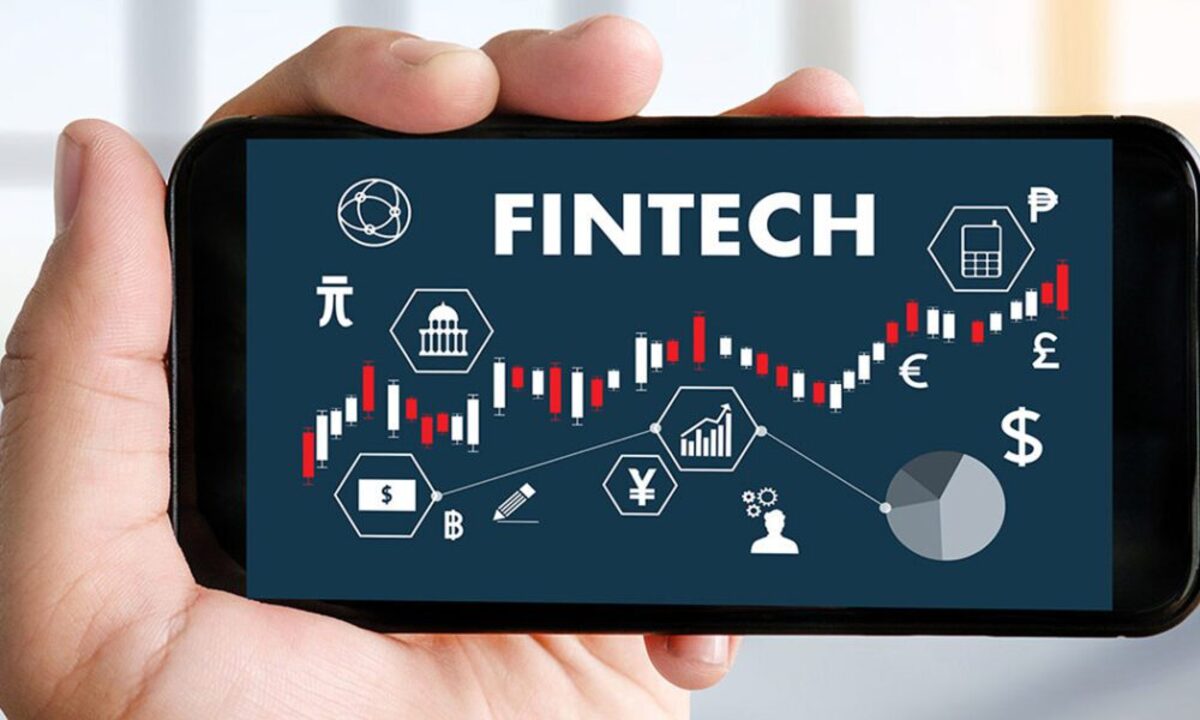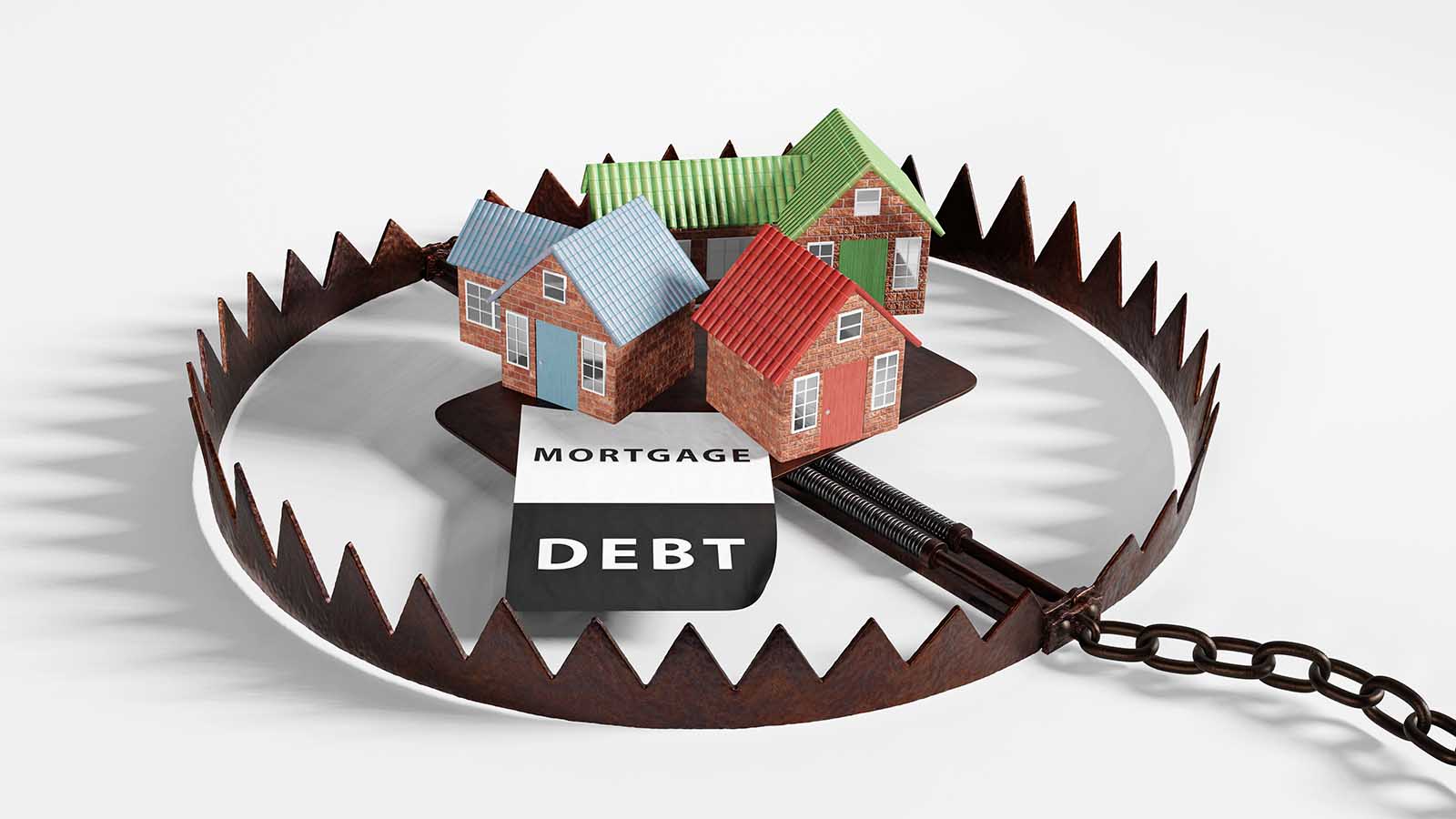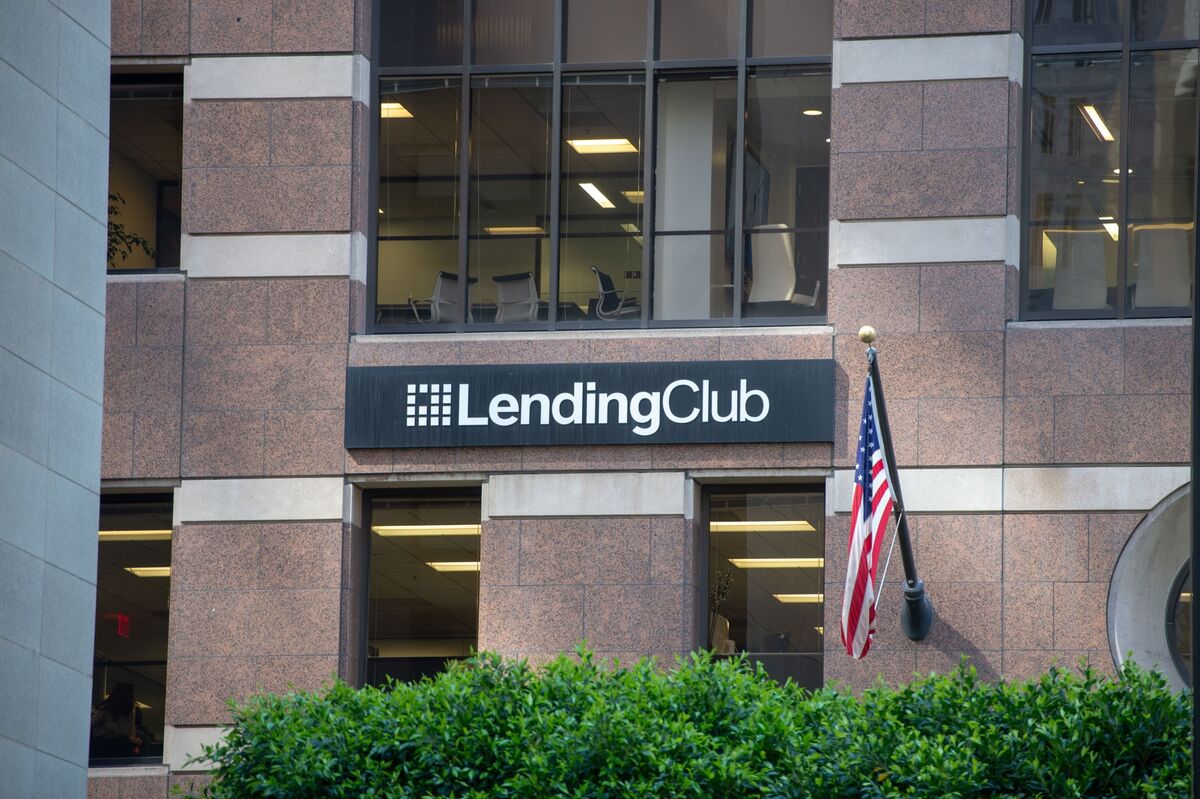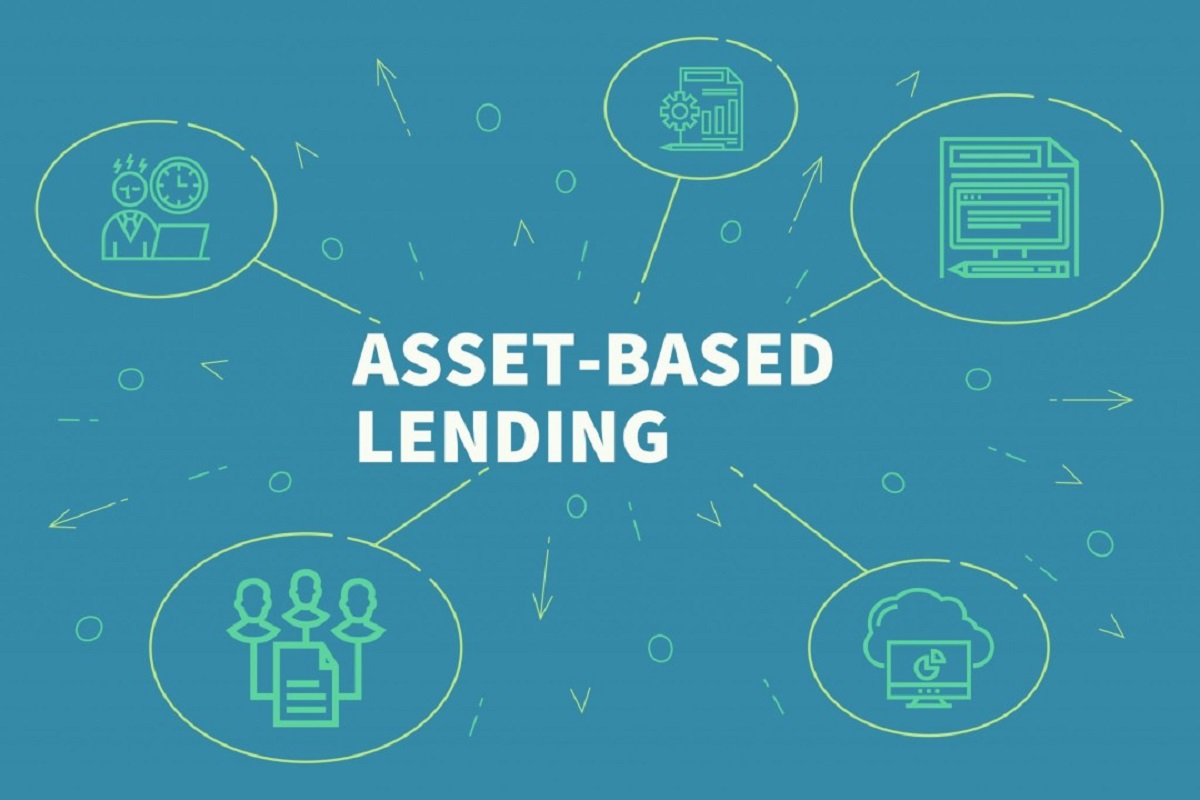Introduction
Fintech plays a significant role in revolutionizing various industries, and lending is no exception. Fintech lending, also known as online lending or digital lending, is the process of using technology and digital platforms to provide loans to individuals and businesses. This innovative approach to lending has gained immense popularity due to its convenience, efficiency, and accessibility.
Traditional lending processes often involve complex paperwork, lengthy approval times, and strict eligibility criteria. However, fintech lending platforms have simplified these processes through the use of advanced algorithms, automation, and real-time data analysis. This has made obtaining loans faster, easier, and more transparent for borrowers.
The rise of fintech lending has also been driven by the growing need for alternative financing options. Many individuals and small businesses often face challenges when seeking loans from traditional financial institutions, such as banks. These challenges include stringent credit requirements, limited access to capital, and slow decision-making processes.
Fintech lending platforms have bridged this gap by leveraging technology to assess creditworthiness in innovative ways. They utilize non-traditional data sources, such as social media profiles, online transactions, and digital footprints, to evaluate borrowers’ creditworthiness. This enables a wider range of individuals and businesses to access funds that may not have been available to them through traditional channels.
Moreover, fintech lending platforms are known for their speed and efficiency. Loan applications can be completed online, and approvals can often be received within minutes or hours, rather than days or weeks. This quick turnaround time is especially beneficial for borrowers who require immediate funding for urgent expenses or business opportunities.
Furthermore, fintech lending platforms offer a seamless and user-friendly experience. Borrowers can easily compare loan terms, interest rates, and repayment options from various lenders within a single platform. This transparency allows borrowers to make informed decisions and choose the best financing option for their needs. In addition, the digital nature of these platforms eliminates the need for face-to-face interactions or physical paperwork, providing convenience to borrowers.
Overall, fintech lending has reshaped the lending landscape, making it more inclusive, efficient, and accessible. Its benefits extend to both borrowers and lenders, as it enables lenders to reach a wider customer base and diversify their loan portfolios. As technology continues to advance and consumer preferences evolve, fintech lending is expected to grow further, offering even more innovative solutions for individuals and businesses in need of financial support.
Definition of Fintech Lending
Fintech lending, also known as online lending or digital lending, refers to the use of technology and digital platforms to provide loans to individuals and businesses. It combines the power of finance and technology to streamline the lending process, making it more convenient, efficient, and accessible.
Traditional lending institutions, such as banks, have been the primary source of loans for decades. However, fintech lending has emerged as a disruptive force in the financial industry, challenging the dominance of traditional lenders by offering innovative and user-friendly solutions.
Unlike conventional lending, which often involves lengthy application processes and stringent eligibility requirements, fintech lending platforms leverage advanced algorithms and real-time data analysis to provide quick and easy access to funds. These platforms have transformed the lending landscape, enabling borrowers to obtain loans in a matter of minutes or hours, rather than weeks or months.
One of the key features of fintech lending is its use of technology to assess borrowers’ creditworthiness. Instead of relying solely on traditional credit scores and financial statements, fintech lenders utilize alternative data sources, such as social media profiles, online transactions, and digital footprints, to evaluate the creditworthiness of borrowers. This allows a wider range of individuals and businesses to access financing options that may have been previously unavailable to them.
Fintech lending platforms also offer a range of loan products to cater to the diverse needs of borrowers. These can include personal loans, small business loans, peer-to-peer lending, crowdfunding, and invoice financing. Borrowers can choose from different loan terms, interest rates, and repayment options, allowing them to find the best financing option for their specific circumstances.
Furthermore, fintech lending platforms prioritize user experience and convenience. Loan applications can be completed online, eliminating the need for physical paperwork and face-to-face interactions. Borrowers can easily compare loan options and receive fast approval decisions, resulting in a streamlined and efficient process.
Overall, the definition of fintech lending encompasses the use of technology to provide loans through online platforms, making the borrowing experience more accessible, transparent, and efficient for individuals and businesses. As the demand for alternative financing options continues to grow, fintech lending is expected to further disrupt the traditional lending landscape, transforming the way people access funds in the future.
Advantages of Fintech Lending
Fintech lending offers numerous advantages over traditional lending methods, making it a popular choice among borrowers. These advantages include:
- Accessibility: Fintech lending platforms provide greater accessibility to loans for individuals and businesses that may have been excluded by traditional lenders. By leveraging alternative data and technology, fintech lenders can assess creditworthiness more accurately and offer loans to a broader range of borrowers.
- Speed: Fintech lending processes are significantly faster compared to traditional lending. Loan applications can be completed online, and approvals can often be received within minutes or hours, allowing borrowers to access funds quickly for urgent needs or business opportunities.
- Convenience: Fintech lending platforms offer a seamless and user-friendly experience. Borrowers can apply for loans from the comfort of their homes, using their computers or mobile devices. The elimination of face-to-face interactions and physical paperwork streamlines the process and saves valuable time.
- Transparency: Fintech lending platforms provide borrowers with transparent and easily understandable loan terms, interest rates, and repayment options. This transparency allows borrowers to make informed decisions and choose the best financing option that suits their needs and financial situation.
- Flexibility: Fintech lenders offer a wide range of loan products to cater to the diverse needs of borrowers. Whether it’s personal loans, small business loans, or peer-to-peer lending, fintech platforms provide flexibility in loan options, enabling individuals and businesses to find the most suitable financing solution.
- Innovation: Fintech lending is at the forefront of technological innovation. Lenders leverage advanced algorithms, data analytics, and artificial intelligence to assess creditworthiness and identify potential risks. This dynamic approach to lending allows for continuous improvement and the development of new solutions to meet the changing needs of borrowers.
- Lower Costs: Fintech lending often leads to lower costs compared to traditional lending. By leveraging technology and automation, fintech lenders can operate with fewer physical branches and staff, reducing overhead costs. These cost savings are often passed on to borrowers in the form of lower interest rates and fees.
Overall, fintech lending offers a range of advantages that benefit both borrowers and lenders. It provides greater accessibility, speed, convenience, transparency, flexibility, innovation, and lower costs compared to traditional lending methods. As fintech lending continues to evolve and gain traction, it is expected to play a vital role in shaping the future of lending and financial services.
How Fintech Lending Works
Fintech lending operates through digital platforms that connect borrowers with lenders. The process involves several key steps:
- Online Application: Borrowers begin by completing an online loan application on the fintech lending platform. The application typically requires personal and financial information, such as income, employment details, and credit history.
- Data Analysis and Credit Assessment: Once the application is submitted, the fintech lending platform utilizes advanced algorithms and data analytics to assess the creditworthiness of the borrower. This evaluation includes analyzing traditional credit scores, as well as utilizing alternative data sources such as social media profiles, online transactions, and digital footprints.
- Loan Offer: Based on the credit assessment, the fintech lending platform generates loan offers tailored to the borrower’s creditworthiness. These offers include loan amount, interest rates, repayment terms, and any applicable fees. Borrowers can compare multiple loan offers to choose the one that best suits their needs.
- Approval and Disbursement: Once the borrower accepts a loan offer, the lender reviews the loan application and verifies the provided information. If approved, the loan amount is disbursed to the borrower’s designated bank account. The disbursement process is typically fast, with funds often being transferred within a few business days or even within hours.
- Repayment: Borrowers are required to repay the loan according to the agreed-upon terms. Most fintech lending platforms offer convenient repayment options, such as automatic withdrawals from the borrower’s bank account. Repayments can be made in installments, with interest and fees included, over a specified period.
- Risk Management: Fintech lending platforms employ risk management strategies to mitigate potential defaults and loan delinquencies. This includes credit monitoring, early warning systems, and collections processes to ensure borrowers meet their repayment obligations.
- Customer Support: Fintech lending platforms offer customer support services to assist borrowers throughout the loan process. This includes providing guidance, answering questions, and addressing any concerns that borrowers may have.
It is important to note that while the process of fintech lending may vary slightly among platforms, the underlying principles remain the same. Technology and data analysis play a crucial role in streamlining and automating the lending process, offering borrowers a convenient and efficient way to access funds.
Types of Fintech Lending Platforms
Fintech lending has given rise to various types of platforms that cater to different lending needs. These platforms leverage technology to provide innovative financing solutions. Here are some of the most common types of fintech lending platforms:
- Peer-to-Peer (P2P) Lending: P2P lending platforms connect individual borrowers directly with lenders, cutting out the traditional financial intermediaries. Borrowers can apply for loans, and investors can choose to fund these loans based on their risk appetite and return expectations. P2P lending platforms facilitate the loan transactions and handle the repayment process.
- Marketplace Lending: Marketplace lending platforms, also known as online lending marketplaces, act as intermediaries between borrowers and a network of lenders. Borrowers can submit loan applications, and lenders can decide whether or not to fund these loans. The platform facilitates the matching of borrowers and lenders and manages the loan origination and repayment process.
- Invoice Financing: Invoice financing platforms provide short-term financing to businesses by advancing funds against outstanding invoices. Businesses can sell their unpaid invoices to these platforms at a discount, enabling them to access immediate cash flow. The platform then collects payments from the debtors on behalf of the business.
- Crowdfunding: Crowdfunding platforms enable individuals and businesses to raise funds from a large group of individuals, often through small contributions. These platforms can be used for various purposes, including financing creative projects, supporting charitable causes, or funding business ventures.
- Online Business Lenders: Online business lenders specialize in providing loans to small and medium-sized businesses. These lenders leverage technology and non-traditional credit assessment methods to evaluate the creditworthiness of businesses quickly. They offer flexible loan terms and quick approvals, making them an attractive alternative to traditional business financing.
- Payday Lending: Payday lending platforms provide short-term loans to individuals, typically to cover unexpected expenses or bridge a temporary financial gap until the next payday. These loans are typically smaller in amount and have higher interest rates compared to traditional loans. Fintech payday lenders have streamlined the application process and provide faster access to funds.
These are just a few examples of fintech lending platforms that have emerged to address specific lending needs in the market. Each platform operates with unique features and benefits, catering to different borrowers and types of loans. The common thread among these platforms is the utilization of technology to enhance the lending experience and provide alternative financing options to individuals and businesses.
Challenges and Risks of Fintech Lending
While fintech lending offers numerous benefits, it also faces certain challenges and risks that need to be addressed. These challenges include:
- Regulatory Compliance: Fintech lending platforms must navigate complex regulatory frameworks to ensure compliance with various financial regulations. Different jurisdictions have different rules and requirements that platforms must adhere to, which can be challenging and time-consuming.
- Data Security and Privacy: Fintech lending platforms handle vast amounts of sensitive personal and financial data. Protecting this data from security breaches and unauthorized access is crucial. Platforms need to invest in robust cybersecurity measures to maintain data privacy and ensure the trust of their customers.
- Credit Risk Assessment: Fintech lenders rely on data analysis and algorithms to assess creditworthiness. However, there is always a risk of inadequate credit risk assessment models that may lead to higher default rates. Continuous monitoring and improvement of credit assessment methods are essential to mitigate this risk.
- Loan Default Rates: Fintech lending is not immune to loan defaults. Some borrowers may be unable to repay their loans, leading to losses for lenders. Implementing effective collections processes and risk management strategies is crucial to manage default rates and minimize potential losses.
- Operational Risk: Fintech lending platforms require robust infrastructure and operational processes to handle loan origination, underwriting, loan servicing, and customer support. Any system failure or operational disruptions can impact the customer experience and the platform’s overall reputation.
- Marketplace Risks: In peer-to-peer and marketplace lending platforms, there is a risk of imbalance between the supply of funds from lenders and the demand for loans from borrowers. If the platform fails to ensure a steady flow of funds or balance the supply and demand, it can result in delays or limitations in loan disbursements.
- Competition: As the fintech lending industry continues to grow, competition intensifies. Fintech lenders must differentiate themselves through innovative products, superior customer experiences, and competitive pricing. Staying ahead of the competition requires continuous innovation and adaptation to changing customer preferences.
Addressing these challenges and risks is essential for the long-term success of fintech lending platforms. Engaging with regulatory authorities, investing in robust security measures, implementing effective risk management strategies, and continuously improving credit assessment algorithms and operational processes are critical steps to overcome these challenges and mitigate risks.
Regulation and Compliance in Fintech Lending
Fintech lending operates in a highly regulated environment, and compliance with financial regulations is crucial to ensure the integrity and stability of the industry. Regulatory bodies around the world have recognized the need to adapt existing regulations or create new ones to address the unique aspects of fintech lending. Here are some key areas of regulation and compliance in fintech lending:
- Licensing and Registration: Fintech lending platforms are often required to obtain appropriate licenses or registrations to operate legally. These licenses typically involve meeting strict criteria related to capital requirements, corporate governance, risk management, and consumer protection. Compliance with licensing and registration requirements helps ensure the credibility and trustworthiness of the platforms.
- Data Protection and Privacy: Fintech lenders deal with vast amounts of personal and financial data. Compliance with data protection and privacy regulations is crucial to safeguarding customer information. Platforms must implement robust data protection measures and adhere to strict privacy policies to protect customer data from unauthorized access or breaches.
- Fair Lending Practices: Fintech lenders must comply with regulations that promote fair lending practices and prevent discrimination. These regulations aim to ensure that borrowers are assessed based on their creditworthiness rather than factors such as race, gender, or religion. Platforms must design their algorithms and lending practices to prevent any form of discriminatory lending practices.
- Anti-Money Laundering (AML) and Know Your Customer (KYC): Fintech lending platforms are subject to regulations aimed at preventing money laundering and terrorist financing. Platforms must implement robust AML and KYC procedures to verify the identity of borrowers and lenders and monitor transactions for suspicious activities. Compliance with these regulations helps mitigate the risk of illicit funds entering the financial system.
- Consumer Protection: Regulations governing consumer protection aim to ensure that borrowers are treated fairly and transparently. Fintech lending platforms must provide clear and accurate information about loan terms, interest rates, fees, and repayment obligations. They must also have mechanisms in place to address consumer complaints and disputes effectively.
- Risk Management and Capital Adequacy: Regulatory bodies may impose requirements for risk management and capital adequacy to ensure the stability of fintech lending platforms. Platforms must have robust risk management frameworks in place to identify, measure, and mitigate risks associated with lending activities. Adequate capital reserves must be maintained to cover potential losses and ensure the platforms’ ability to fulfill their financial obligations.
- Cross-Border Regulations: Fintech lending platforms that operate across multiple jurisdictions must navigate cross-border regulations to comply with the respective laws of each jurisdiction. These regulations may include licensing requirements, data transfer restrictions, and compliance with local consumer protection laws. Compliance with cross-border regulations is essential to maintain regulatory compliance globally.
Fintech lending platforms must have a thorough understanding of the regulatory landscape in which they operate. They need to dedicate resources to ensure compliance with applicable regulations and stay updated on any changes in the regulatory environment. Collaboration with regulatory authorities and industry associations helps ensure a balanced approach to regulation that fosters innovation while protecting consumers and maintaining the integrity of the fintech lending industry.
Future of Fintech Lending
The future of fintech lending looks promising as technology continues to advance and consumer preferences evolve. Several trends and developments are expected to shape the future of this industry:
- Artificial Intelligence and Machine Learning: The use of artificial intelligence (AI) and machine learning (ML) is poised to play a pivotal role in fintech lending. These technologies have the potential to enhance credit risk assessment, automate underwriting processes, and personalize loan offerings based on individual borrower profiles.
- Blockchain and Smart Contracts: Blockchain technology offers opportunities for increased transparency, security, and efficiency in the lending process. Smart contracts deployed on blockchain platforms can automate loan agreements, reduce administrative costs, and eliminate disputes by ensuring adherence to predefined terms and conditions.
- Open Banking and Data Collaboration: Open banking initiatives allow fintech lenders to access customer financial data from traditional banks with proper authorization. This access to comprehensive financial data enables more accurate credit assessment and personalized loan offerings. Data collaboration among fintech lenders and traditional financial institutions can further enhance lending capabilities.
- Expansion to Underbanked and Underserved Markets: Fintech lending has the potential to bridge the financial inclusion gap by offering services to underserved populations and underbanked markets. By leveraging technology and non-traditional data sources, fintech lenders can extend loans to individuals and businesses with limited credit histories or without access to traditional financial services.
- Partnerships and Integration: Fintech lending platforms are expected to form strategic partnerships and integrate with other fintech companies to provide a holistic suite of financial services. This integration can include digital payment solutions, financial planning tools, and investment platforms, creating a seamless customer experience.
- Regulatory Evolution: Regulatory bodies are likely to continue evolving to accommodate the rapidly changing fintech lending landscape. Regulations will strike a balance between fostering innovation and ensuring consumer protection, with a focus on addressing potential risks and promoting fair lending practices.
- Global Expansion: Fintech lending is not limited by geographical boundaries. As the industry matures, we can expect fintech lenders to expand their services globally, accessing new markets and diversifying their customer base.
The future of fintech lending will be shaped by ongoing technological advancements, evolving regulatory frameworks, and changing consumer expectations. As fintech platforms continue to innovate and adapt, they have the potential to revolutionize the lending industry, providing individuals and businesses with faster, more accessible, and personalized financial solutions.
Conclusion
Fintech lending has emerged as a disruptive force in the lending industry, revolutionizing the way individuals and businesses access financing. By leveraging technology, data analysis, and automation, fintech lenders have streamlined the lending process, offering greater convenience, speed, and accessibility to borrowers.
The advantages of fintech lending are evident, as it provides borrowers with easier access to funds, quicker approvals, transparent loan terms, and innovative loan products. Fintech lending platforms have also addressed the needs of individuals and businesses that were previously underserved by the traditional financial system.
However, fintech lending is not without its challenges and risks. Platforms must navigate regulatory frameworks, ensure data security and privacy, manage credit risks, and address potential defaults. Compliance with regulatory requirements and continuous innovation are essential for the long-term success of fintech lenders.
The future of fintech lending looks promising, driven by advancements in AI, blockchain, open banking, and expanding market opportunities. Integration with other fintech services, the evolution of regulations, and global expansion are expected to shape the industry’s growth potential.
As we move forward, it is crucial for fintech lending platforms to continue prioritizing customer-centric approaches and maintaining the trust of borrowers. By doing so, fintech lenders can continue to provide innovative solutions, promote financial inclusion, and foster a more accessible and efficient lending ecosystem.

























